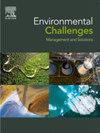Coastal Workforce Development Success: The U.S. Coastal Research Program & the Keystone Variable Concept
Q2 Environmental Science
引用次数: 0
Abstract
Complex societal issues surrounding future climate impacts and responses within coastal regions represent multifaceted non-stationary problems requiring a large, diverse and skilled workforce to develop and evolve solutions. The coastal zone represents a present and future challenge as the global nexus of nature, society, infrastructure, and development. In the last 25 years, 1999-2024, several of U.S. organizations have formally called for increasing the coastal workforce as complex coastal issues grow surrounding changing environmental conditions related to coastal hazards (e.g., sea level rise, increased storm frequency and intensity) and increased societal pressures such as development. Has society responded to these calls for action and if not, how can we more effectively work to do so? This paper presents a broad overview of global coastal zone issues necessitating workforce development. We posit tactics for workforce development across employment sectors and highlight the Keystone Variable Framework used by the U.S. Coastal Research Program (USCRP) to target actions leading to coastal sector workforce growth. Lastly, we discuss coastal student survey results to glean current and future deterrents to coastal workforce development and how to overcome them. This paper represents a renewed and imperative call to action for globally developing the coastal workforce across industries and disciplines, providing a framework to do so in the Keystone Variable Concept, that can be utilized across employment sectors.

沿海劳动力发展的成功:美国沿海研究计划&关键变量概念
围绕未来气候影响和沿海地区应对的复杂社会问题是多方面的、非固定的问题,需要大量、多样化和熟练的劳动力来开发和发展解决方案。作为全球自然、社会、基础设施和发展的纽带,沿海地区代表着当前和未来的挑战。在过去的25年里,1999-2024年,一些美国组织正式呼吁增加沿海劳动力,因为与沿海灾害(如海平面上升,风暴频率和强度增加)和发展等社会压力增加相关的环境条件变化带来的复杂沿海问题日益严重。社会是否对这些行动呼吁作出了回应?如果没有,我们如何才能更有效地采取行动?本文提出了全球沿海地区的问题,需要劳动力发展的一个广泛的概述。我们提出了跨就业部门的劳动力发展策略,并强调了美国沿海研究计划(USCRP)使用的关键变量框架,以确定导致沿海部门劳动力增长的行动。最后,我们讨论了沿海学生的调查结果,以收集当前和未来沿海劳动力发展的障碍以及如何克服这些障碍。本文代表了一个新的、迫切的行动呼吁,呼吁全球范围内发展沿海地区跨行业和学科的劳动力,并在Keystone变量概念中提供了一个框架,可以在各个就业部门中使用。
本文章由计算机程序翻译,如有差异,请以英文原文为准。
求助全文
约1分钟内获得全文
求助全文
来源期刊

Environmental Challenges
Environmental Science-Environmental Engineering
CiteScore
8.00
自引率
0.00%
发文量
249
审稿时长
8 weeks
 求助内容:
求助内容: 应助结果提醒方式:
应助结果提醒方式:


